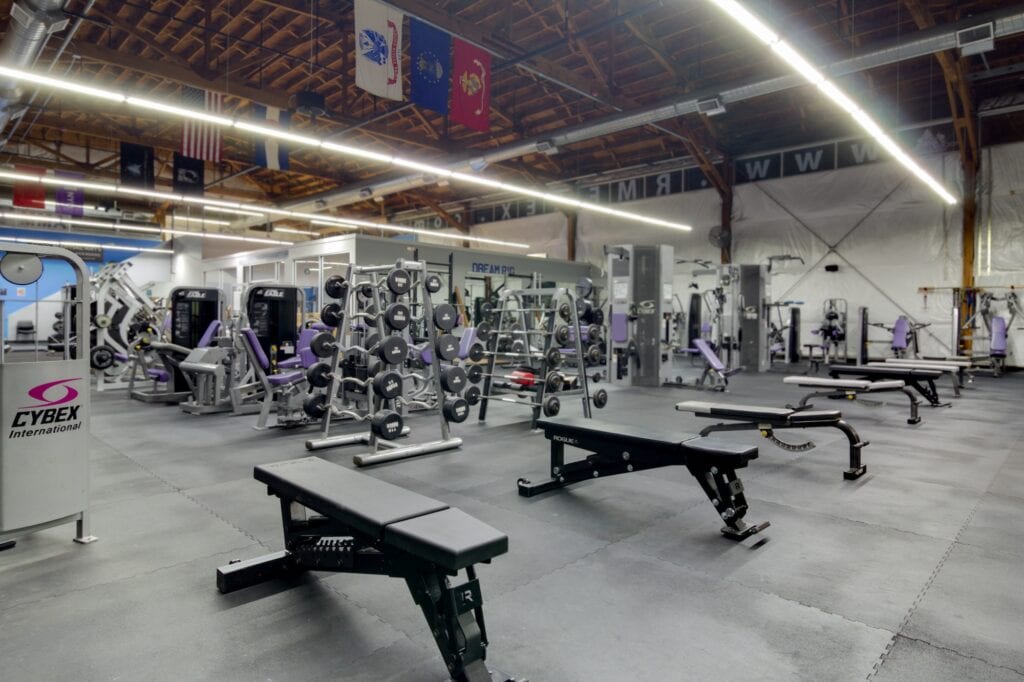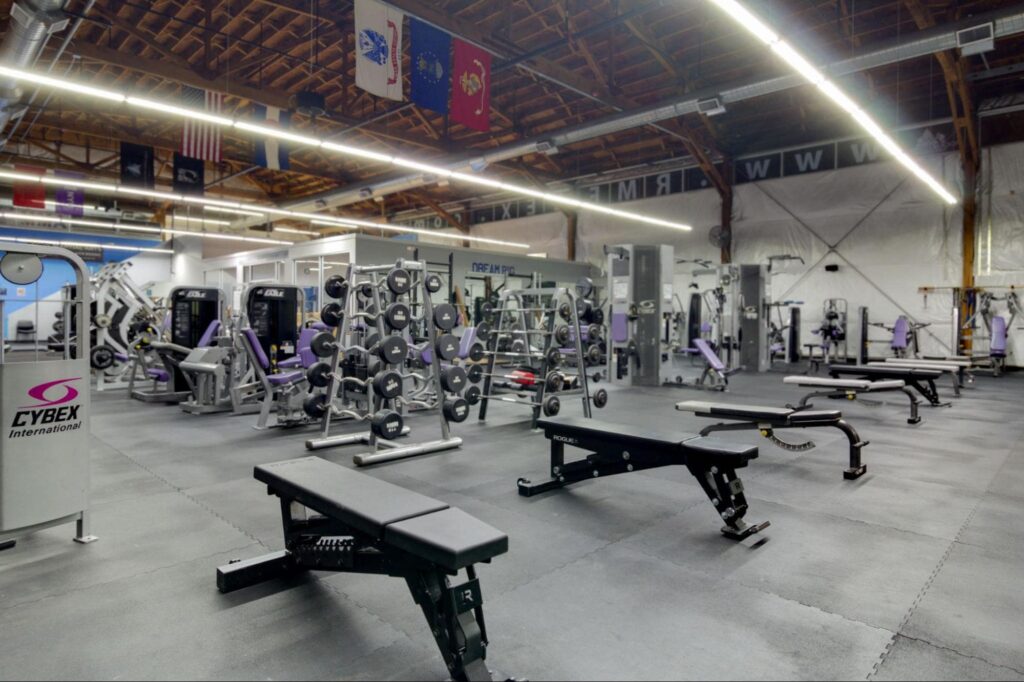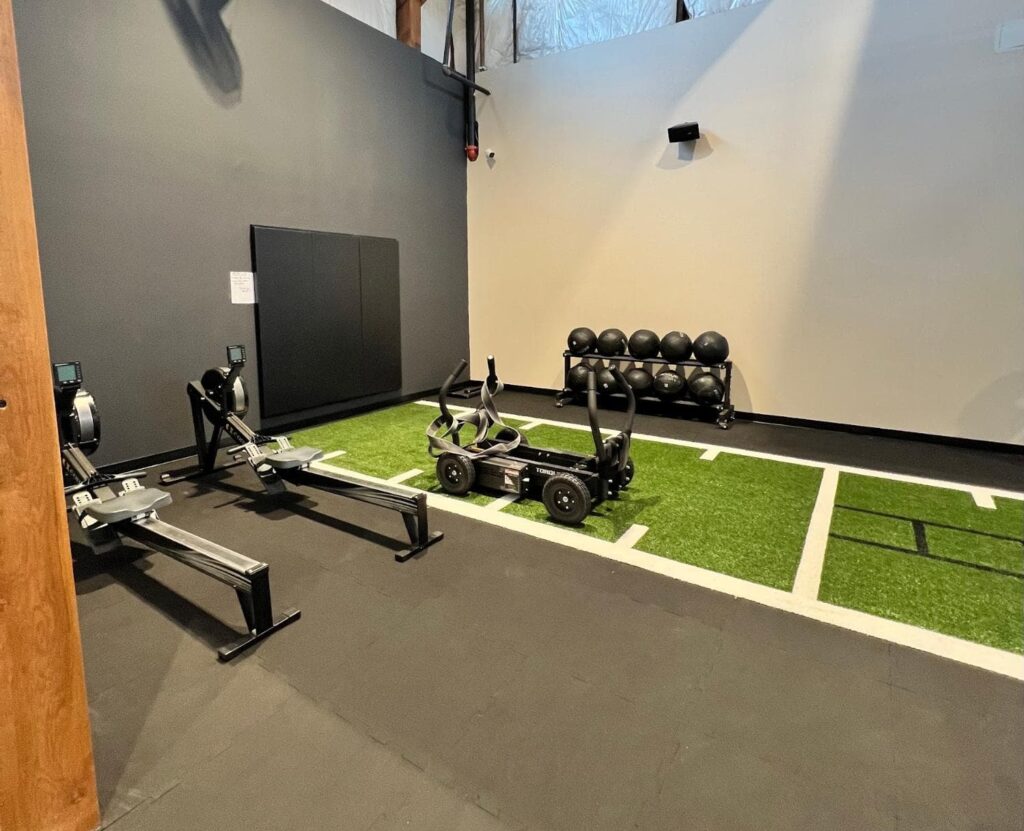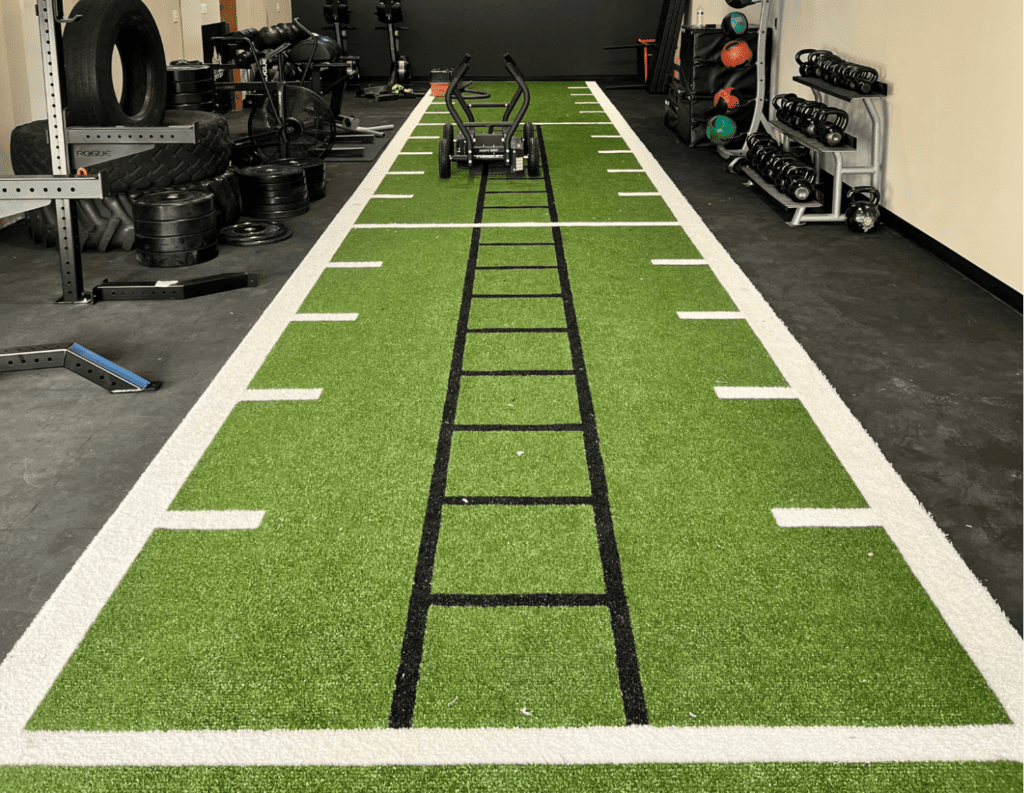As we kick off 2024, our Rocky Mountain Flex members’ determination to stay committed to their fitness goals is at an all-time high. If you’ve been following a workout program for a while and you are ready to take your progress to the next level, you might want to consider dialing in your nutrition more. A great way to do that is with weekly meal prep. This is a game-changer when it comes to crushing your fitness goals, whether you want to shed some weight or build muscle mass.
Carving out some time each week to plan and prep your meals helps give you a grip on what you’re putting into your body.
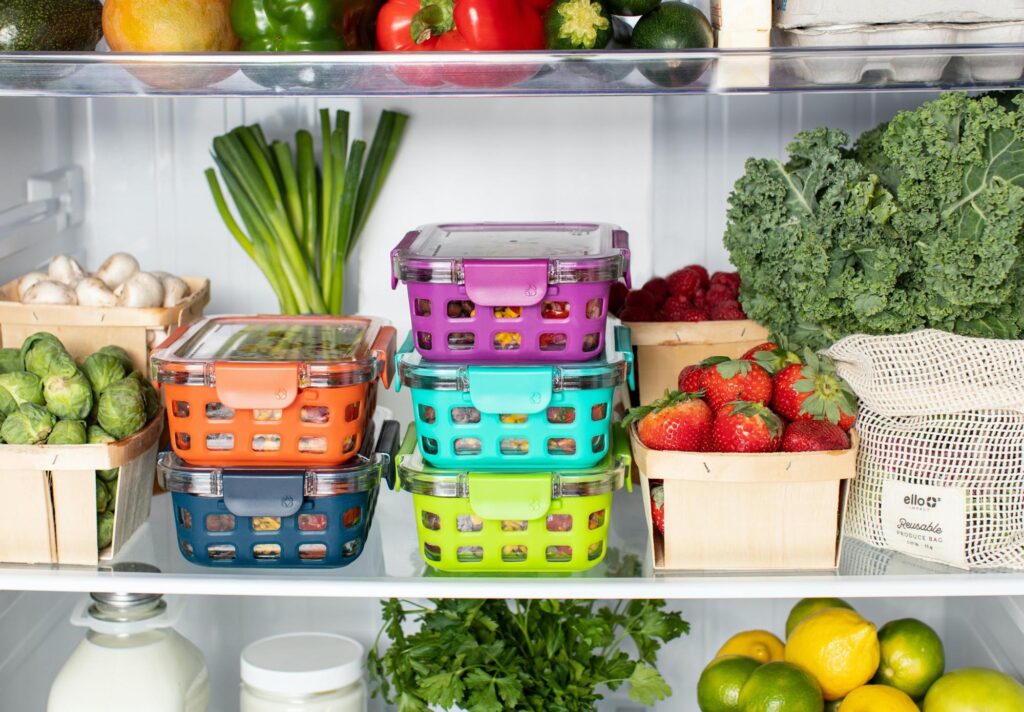
Why bother with meal prep? Well, for starters, it’s a massive time and money saver. By dedicating a specific slot each week to cooking and assembling meals beforehand, you skip the everyday stress of figuring out what to eat or cooking every meal from scratch. This not only frees up valuable time during your busy week but also lowers the chance of resorting to fast food or quick-fix meals, which tend to pack in more calories, unhealthy unsaturated fats, and added sugars. Plus, buying ingredients in bulk for meal prep can trim down your expenses, making healthy eating more wallet-friendly.
Meal prep also gives you precise control over the nutritional value of each dish. For those aiming to shed pounds, planning meals allows for careful portioning and exact measurement of macros and calories, making it easier to stick to a calorie deficit for weight loss.
On the flip side, if you’re looking to bulk up, meal prep lets you customize your meals to include generous amounts of protein, complex carbs, and healthy fats – crucial for muscle repair and growth. If you have food allergies or sensitivities, meal prep gives you the power to dodge allergens and ingredients that might trigger unwanted reactions, this keeps the inflammation in your body low and supports your overall digestive health.
You can speak to most of our personal trainers who have embraced meal prep for years with both themselves and their clients and can vouch for its effectiveness in achieving their health goals. It’s not just a cost-effective way to eat well but it also helps you know exactly what goes into each meal. This level of control not only helps you progress toward your health goals but also fosters a sustainable and balanced approach to eating.
Here Are 8 Amazing Benefits of Meal Prepping:
- Time-Saving: Reduces your daily cooking time significantly. You may find that it’s helpful to cook your meals on Sunday to set you up for success all week.
- Consistency: Promotes healthier eating habits by ensuring nutritious meals are readily available, reducing the temptation for fast food or junk food that can derail you from your goals.
- Portion Control: Helps manage portion sizes, helping you hit your calorie and macro targets. It’s common for most people to overestimate how much protein and underestimate the fat they are eating daily, leaving them wondering why they aren’t able to lose fat or gain muscle mass. You might find a digital kitchen scale helpful for accurately measuring portions.
- Cost-Effective: Buying ingredients in bulk at places like Costco or Sam’s Club for meal prep often reduces overall grocery expenses. You can find great deals on large bags of vegetables, seasonings, eggs, animal proteins, grains, and even protein powders. By having your meals prepped, you will save money by not eating out daily, which can often be upwards of $15 per day in Denver.
- Reduced Stress: It minimizes the stress of daily meal decisions, making it easier to stick to healthy eating habits and convenient to grab and go, ensuring nutritious meals are available during busy days. You also won’t be stressed from running late for work on Monday and not having anything for lunch.
- Customization: Allows for personalized meal plans tailored to individual dietary needs, preferences, or fitness goals.
- Environmentally Friendly: Reusable glass containers can be found on Amazon and other retailers, helping to reduce the amount of plastic and waste that is in our environment.
- Promotes Cooking Skills: Encourages individuals to explore and improve their culinary skills by planning and preparing diverse meals. At first, you may find meal prepping hard if cooking is not in your wheelhouse, but it will become easier over time. This is a skill that will stick with you for life!
Understanding Your Macro Needs for Meal Planning:
Before diving into macro-focused meal planning, it’s crucial to understand your body’s unique macronutrient needs. This approach is helpful if you are working towards a S.M.A.R.T. goal. S.M.A.R.T. is an acronym for goal setting which stands for Specific, Measurable, Achievable, Relevant, and Time-bound.
Macros, short for macronutrients, include carbohydrates, proteins, and fats – the essential components of our diet that provide energy and support bodily functions. Determining your macro requirements lays a solid foundation for crafting meals that align with your health and fitness goals.
Of course, with meal planning and prepping, you don’t need to follow a macro approach if you are just looking to eat healthier or don’t want to focus on the numbers. You may also follow general measurements such as 1-2 palm-sized pieces of protein, 2 fist-sized servings of vegetables, 1-2 thumb-sized servings of fat, and 1-2 cupped handfuls of carbohydrates.

Calculate Your Baseline Macros According to Your Goals:
Start by calculating your baseline macronutrient needs. Several online calculators or formulas can help estimate these values based on factors like age, weight, height, activity level, and specific objectives (weight loss, maintenance, or muscle gain).
You can calculate these figures by first understanding your BMR (basal metabolic rate) through online calculators or, for more precision, opt for an RMR (resting metabolic rate) test through a healthcare provider. Multiply your BMR by your activity level to get your TDEE (total daily energy expenditure), providing an estimate of your daily calorie burn at rest.
Once armed with this number, you can strategically adjust your calorie intake to achieve specific goals—creating a deficit for fat loss or a surplus for muscle gain.
Next, tailor your macro intake based on your energy requirements and track your food consumption using a tracking app like Cronometer, Lose It, or MyFitnessPal. This will give you a real understanding of why progress is or isn’t being made.
Understanding Macronutrients: Protein, Fats, and Carbohydrates
- Protein: Vital for muscle repair and growth, protein intake is essential, especially for those looking to build muscle or maintain it while losing weight. Aim for a moderate to high protein intake based on your activity level and fitness goals.
- Carbohydrates: Carbs serve as the primary energy source for your body. Balancing the type and amount of carbohydrates consumed can significantly impact energy levels and performance during workouts or daily activities.
- Fats: Despite the misconception, fats are crucial for various bodily functions, including hormone production and nutrient absorption. Opt for healthy fats like those found in avocados, nuts, seeds, and extra virgin olive oil while limiting saturated and trans fats.
Adjust Macros Based on Goals:
Depending on your objectives, you may need to tweak your macro intake. Those aiming for weight loss might focus on a slight calorie deficit, adjusting macros accordingly. Conversely, individuals looking to gain muscle might increase their protein and overall calorie intake.
Listen to Your Body:
While calculators provide a good starting point, it’s essential to listen to your body. Monitor how your energy levels, performance, and overall well-being respond to different macro distributions. Adjustments might be necessary over time as your goals and body composition change.
You may want guidance when it comes to making adjustments, and this is where consulting a nutritionist, dietitian, or fitness professional may be beneficial. They can offer tailored advice based on your specific goals and needs, ensuring a more precise and effective approach to tweaking your diet.
Understanding these macronutrients and their optimal intake can help you craft a meal plan tailored to your specific health and fitness objectives. Balancing these components is pivotal for overall well-being and achieving your desired nutritional goals.
7 Popular Dietary Approaches You Might Consider Before Meal Planning:
- Flexible Dieting (IIFYM – If It Fits Your Macros): Focuses on meeting specific macronutrient targets (protein, carbs, fats) while allowing flexibility in food choices, emphasizing overall calorie control.
- Ketogenic Diet (Keto): A high-fat, moderate-protein, low-carbohydrate diet designed to induce ketosis, where the body primarily uses fat for fuel rather than carbohydrates.
- Paleo Diet: Encourages consuming foods that were available to our Paleolithic ancestors, emphasizing whole foods like lean meats, fish, fruits, vegetables, nuts, and seeds while excluding processed foods, beans, grains, and dairy.
- High-Protein Diet: Prioritizes protein intake to support muscle growth, satiety, and weight loss.
- Mediterranean Diet: Based on traditional eating patterns of Mediterranean countries, rich in fruits, vegetables, whole grains, lean and fatty fish, extra virgin olive oil, and moderate consumption of dairy and lean meats. This diet focuses on increasing omega-3 fatty acids and limiting saturated fats, making it healthy for the heart and brain.
- Intermittent Fasting: While not a specific diet, it involves cycling between periods of eating and fasting, affecting meal timing and potentially influencing macronutrient distribution during eating windows.
- Plant-Based, Vegetarian, and Vegan Diets: These focus on whole plant foods while minimizing or eliminating animal products. The emphasis is on fruits, vegetables, legumes, nuts, and seeds.
Once you’ve determined the dietary approach that will fit your lifestyle best, you can get started with meal planning and prepping.
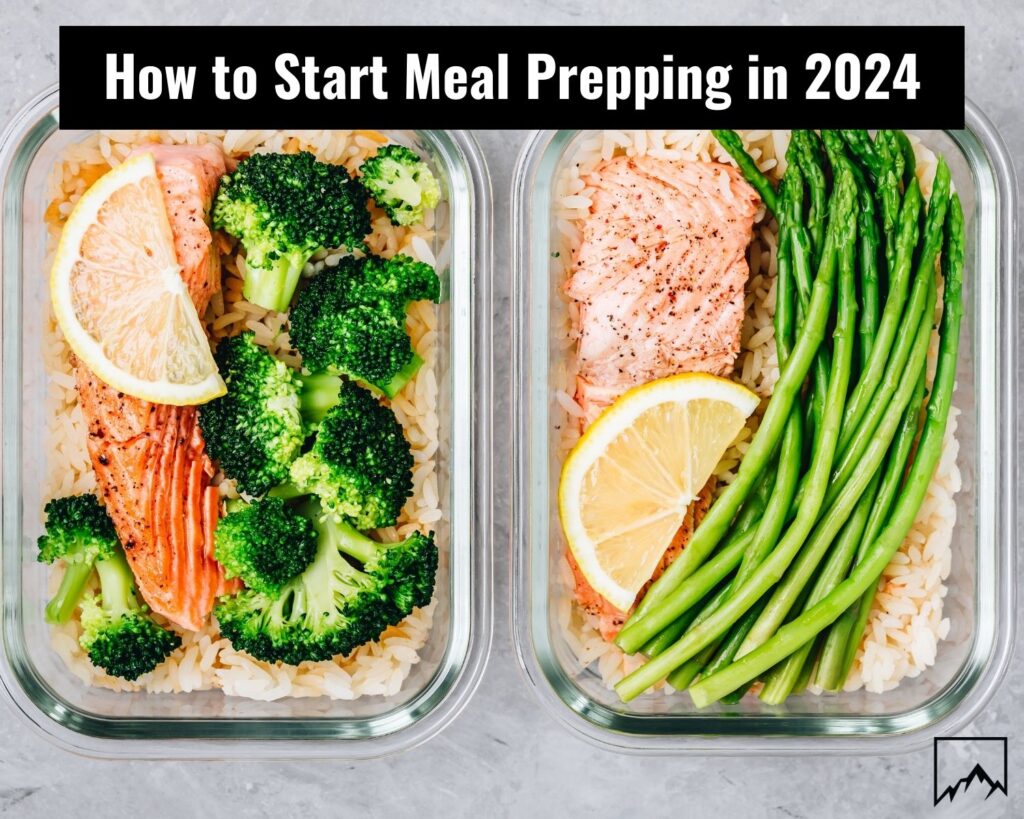
How to Start Weekly Meal Prepping:
Recipe Search: Explore recipes from platforms like Pinterest, websites, or cookbooks that offer simple yet delicious options. Opt for recipes that are straightforward with minimal ingredients. The simpler, the better – it’ll help you avoid feeling overwhelmed or tempted to eat out.
Take Pantry and Refrigerator Inventory: Take a peek at what’s already in your kitchen. This will help you identify what you need to buy and prevent unnecessary duplicate purchases. If you haven’t cooked in a while, you may not realize that you already have many pantry staples like rice, oatmeal, etc. Once you’ve checked your inventory, create a comprehensive grocery list for the week.
Meal Planner: Download a blank meal planner sheet and start sketching out your meals for the week. Designated spaces for breakfast, lunch, dinner, and snacks will keep you on track,
Choose a Meal Prep Method
There are many methods you can use but here is one of the more popular meal prep methods to help you get started.
Big Batch Cooking Method:
- Grocery Shop: Do all of your grocery shopping over the weekend. Streamline your home cooking experience by investing in pre-cut fruits and vegetables available at most grocery stores. Having these readily chopped, washed, and prepared ingredients significantly expedites meal preparation. You can find pre-chopped vegetables at grocery stores like King Soopers, Trader Joe’s, Whole Foods, and more.
Take the hassle out of grocery shopping by utilizing online platforms like Instacart, Shipt, or Amazon Fresh. Let these services handle the shopping while you focus on other essential tasks.
Try a local fresh produce subscription service such as Farm & Market, a hydroponic farm and market in Denver’s RiNo district. They have weekly produce subscriptions for over +50 varieties of leafy greens to choose from and all +100 local Colorado-made products that can be purchased as well, making grocery shopping easy. - Start Your Meal Prep: Take a couple of hours to cook large portions of proteins, vegetables, potatoes, grains, etc. all at once on a day of your choosing, Sunday is usually a great day to get prepared for the week. You might follow a recipe you find online and double or triple the recipe. If you’re not one for recipes, you can keep things simple by grilling a batch of chicken, sautéing ground beef or turkey, cooking a pot of oatmeal, and making a large pan of roasted vegetables with various herbs and seasonings.
For breakfast, you may also consider prepping versatile options like mason jar overnight oats, hard boiled eggs, or egg muffins.
Utilize the ease of crockpot and Instant Pot meals to create large portions with minimal hands-on effort. It’s a hassle-free approach that saves time and offers delicious, healthy options.
Another great appliance that will make your life easier and your food tastier is an air fryer. You can roast flavorful potatoes, vegetables, and more.
To make life easier, you may want to clean as you go so there is not a huge mess at the end. Stay organized by washing dishes, loading the dishwasher, wiping counters, and putting away unused items while cooking. - Pack Meals into a Grab-and-Go Container: Once you’ve cooked all of your food, you can pack your completed meals into individual containers according to your macro approach, then throw them in the refrigerator or freeze the meals that you’ll eat later in the week.
If you give meal planning and prepping a shot but find that it’s not your cup of tea or you’re simply too busy, you can opt for purchasing local, healthy meals that are already pre-made.
Purchase Local Pre-Made Meals from MyFitFoods:
MyFitFoods delivers nationwide but we are lucky to have two locations right here in Denver. You can swing by their Cherry Creek or Denver Tech Center locations to pick up delicious pre-made meals. MyFitFoods excels at crafting meals that cater to health-conscious people like our members. They try to avoid added preservatives, artificial colors, sugars, and excessive sodium, along with ensuring a macro-friendly approach to nutrition. You will find several high-protein meals for breakfast, lunch, and dinner that also cater to a dairy- and gluten-free lifestyle. The meals are also very reasonably priced so if cooking is not your thing or you simply don’t have time, this could be a great option.
Implementing these tips not only saves time but also ensures you’re prepared with healthy meals even during the busiest of days. We would love to see how things go once you start your meal prep journey, tag us at @RMFLEX on Instagram!





